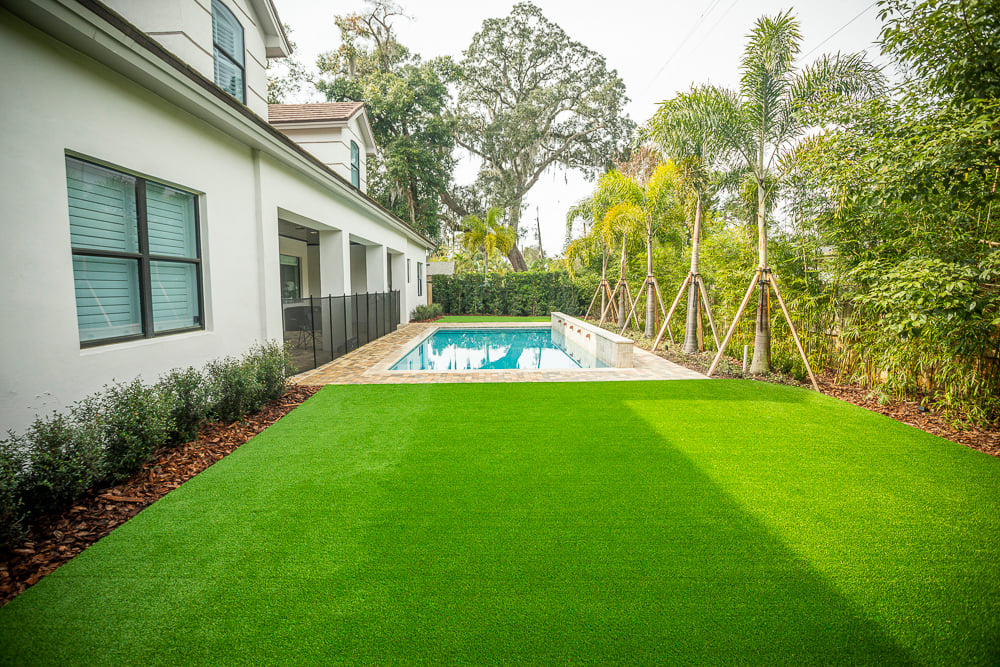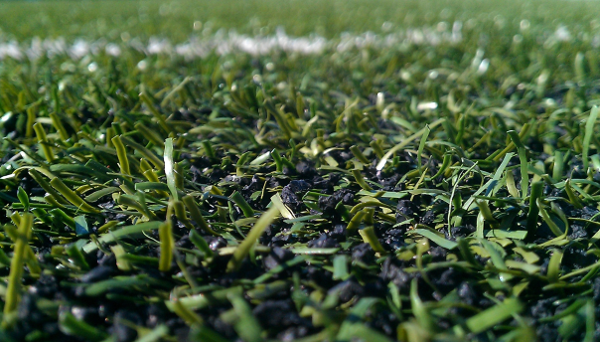Find Reliable Artificial Turf Companies Phoenix for Durable and Natural-Looking Grass
Find Reliable Artificial Turf Companies Phoenix for Durable and Natural-Looking Grass
Blog Article
Explore the Environmental Advantages of Opting for Artificial Grass Solutions
The adoption of man-made turf options provides a compelling opportunity to deal with pushing ecological obstacles. By significantly decreasing water usage and minimizing the application of dangerous chemicals, these alternatives not only promote lasting landscaping however additionally protect neighborhood ecosystems.
Water Preservation Conveniences
One of the most significant advantages of man-made turf is its ability to preserve water. In contrast, man-made lawn does not need watering, dramatically reducing the general need for water sources.
By eliminating the requirement for regular watering, synthetic grass adds to lasting landscape techniques and aids reduce the environmental effect of extreme water usage. The preservation of water expands to the reduction of runoff, which can lead to soil erosion and river air pollution.
In addition, the installment of synthetic grass permits property owners and municipalities to allot water resources extra efficiently, concentrating on crucial usages such as alcohol consumption water and farming. The shift towards fabricated lawn not just promotes accountable water usage but additionally lines up with broader environmental objectives intended at protecting all-natural resources.
As communities increasingly focus on sustainability, the water preservation benefits of synthetic grass offer a compelling case for its fostering in commercial and domestic landscaping jobs.
Decreased Chemical Use
The transition to synthetic turf significantly lowers the dependence on chemical therapies commonly utilized in all-natural yard maintenance. Typical lawn monitoring normally entails the application of fertilizers, pesticides, and herbicides to promote development and control bugs. These chemicals can posture risks to human wellness, neighborhood wild animals, and the environment, adding to dirt and water contamination.
On the other hand, synthetic lawn removes the requirement for these hazardous substances. When set up, it requires marginal upkeep, mostly containing regular cleansing and occasional infill replenishment. This reduction in chemical use not just profits the instant atmosphere but likewise adds to more comprehensive ecological stability. By minimizing the launch of synthetic compounds right into the environment, artificial lawn advertises much healthier dirt and water supply.
Additionally, the lack of chemical runoff related to fabricated lawn installations assists protect regional waterways from air pollution, sustaining water life and keeping biodiversity. Arizona artificial turf. As areas increasingly prioritize lasting methods, going with synthetic grass presents a practical solution that lines up with environmental preservation objectives. Via this change, residential property proprietors can enjoy lush green rooms without jeopardizing ecological wellness, leading the way for a much more lasting future
Reduced Carbon Footprint

Moreover, the installment of fabricated lawn can lead to considerable water conservation. All-natural lawns call for significant quantities of water for watering, which not just includes in the carbon footprint connected with water removal and therapy yet also stress neighborhood water sources. On the other hand, synthetic grass needs very little maintenance, needing no watering, therefore considerably decreasing water use and its linked energy costs.
In addition, the longevity of fabricated turf contributes to its lower carbon influence. With a lifespan of approximately 15 years or more, the requirement for constant substitutes is reduced, leading to less waste and reduced power intake in manufacturing and getting rid of typical lawn choices. Generally, synthetic grass provides a lasting choice for ecologically mindful landscape design.
Environment Preservation
Habitat conservation is a crucial factor to consider in the debate over landscaping options, especially when contrasting synthetic grass to natural lawn. All-natural grass yards usually need considerable maintenance, including the usage of herbicides, plant foods, and pesticides, which can adversely affect regional environments. These chemicals can leach right into the soil and rivers, harming native vegetation and fauna and disrupting regional environments.
On the other hand, synthetic grass provides an opportunity to lower the environmental footprint of landscape design. By selecting artificial turf, house owners can reduce the interruption of natural environments connected with conventional grass treatment practices. Artificial turf removes the demand for hazardous chemicals, therefore securing nearby wild animals and keeping the honesty of bordering environments. In addition, the installation of artificial grass can cause the conversion of former grass areas into more biodiverse landscapes, such as pollinator gardens or native plant locations, which can support local wildlife.
Eventually, the transition to man-made grass not only preserves water and minimizes upkeep efforts yet also promotes an extra harmonious connection between human activities and the native environment, advertising environment conservation at the same time.
Long-Term Sustainability
Lasting sustainability is a vital consider assessing the advantages of artificial turf over typical grass yards. Among the most significant benefits of man-made lawn is its longevity; it can last up to 15-20 years with very little upkeep, whereas all-natural lawn requires frequent reseeding and substitute. This longevity reduces the requirement for constant sources, such as water, plant foods, and chemicals, which are essential for keeping a healthy grass read the full info here yard.
Furthermore, synthetic grass adds to a reduction in carbon emissions related to yard care devices. Conventional yards often need gas-powered mowers, leaners, and blowers, all of which add to air contamination. Artificial turf companies phoenix. In contrast, synthetic grass gets rid of the demand for such devices, advertising a cleaner atmosphere
Moreover, the production of synthetic grass increasingly uses recycled materials, enhancing its sustainability account. As producers embrace environment-friendly methods, the environmental footprint of synthetic grass proceeds to decrease.

Final Thought
The adoption of man-made grass services provides considerable environmental benefits, including substantial water preservation, decreased dependence on unsafe chemicals, and a reduced carbon impact. Additionally, fabricated lawn help in preserving all-natural habitats by decreasing land disturbance and promoting long-term sustainability via the usage of long lasting materials. Collectively, these elements underscore the potential of synthetic grass to add favorably to environmental wellness and provide a practical alternative to standard landscape design methods in an increasingly resource-conscious globe.
In contrast, artificial grass does visit this site right here not require watering, significantly lowering the overall need for water resources. By minimizing the release of synthetic substances right into the community, synthetic lawn promotes healthier dirt and water systems.
Moreover, the installation of artificial lawn can result in considerable water conservation. In contrast, man-made lawn requires marginal upkeep, calling for no watering, thereby significantly reducing water use and its connected energy costs.

Report this page